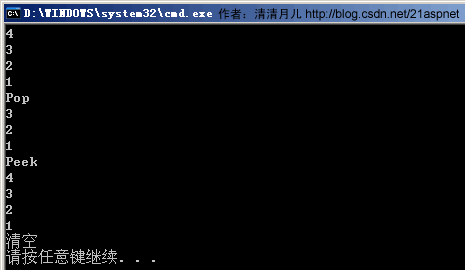1.数组是固定大小的,不能伸缩。虽然System.Array.Resize这个泛型方法可以重置数组大小,但是该方法是重新创建新设置大小的数组,用的是旧数组的元素初始化。随后以前的数组就废弃!而集合却是可变长的。
2.数组要声明元素的类型,集合类的元素类型却是object。
3.数组可读可写不能声明只读数组。集合类可以提供ReadOnly方法以只读方式使用集合。
4.数组要有整数下标才能访问特定的元素,然而很多时候这样的下标并不是很有用。集合也是数据列表却不使用下标访问。很多时候集合有定制的下标类型,对于队列和栈根本就不支持下标访问!
二、下面讲述6种常用集合
1.ArrayList类
|
 |
| 图1 |
2.Stack类
栈,后进先出。push方法入栈,pop方法出栈。
|
 |
| 图2 |
#p#
3.Queue类
队列,先进先出。enqueue方法入队列,dequeue方法出队列。
|
 |
| 图3 |
4.Hashtable类
哈希表,名-值对。类似于字典(比数组更强大)。哈希表是经过优化的,访问下标的对象先散列过。如果以任意类型键值访问其中元素会快于其他集合。GetHashCode()方法返回一个int型数据,使用这个键的值生成该int型数据。哈希表获取这个值最后返回一个索引,表示带有给定散列的数据项在字典中存储的位置。
|
 |
| 图4 |
#p#
5.SortedList类
与哈希表类似,区别在于SortedList中的Key数组排好序的。
|
 |
| 图5 |
6.NameValueCollection类
官方给NameValueCollection定义为特殊集合一类,在System.Collections.Specialized下。
System.Collections.Specialized下还有HybridDicionary类,建议少于10个元素用HybridDicionary,当元素增加会自动转为HashTable。
System.Collections.Specialized下还有HybridDicionary类,字符串集合。
System.Collections.Specialized下还有其他类大家可以各取所需!
言归正转主要说NameValueCollection,HashTable 和 NameValueCollection很类似但是他们还是有区别的,HashTable 的KEY是唯一性,而NameValueCollection则不唯一!
|
 |
| 图6 |